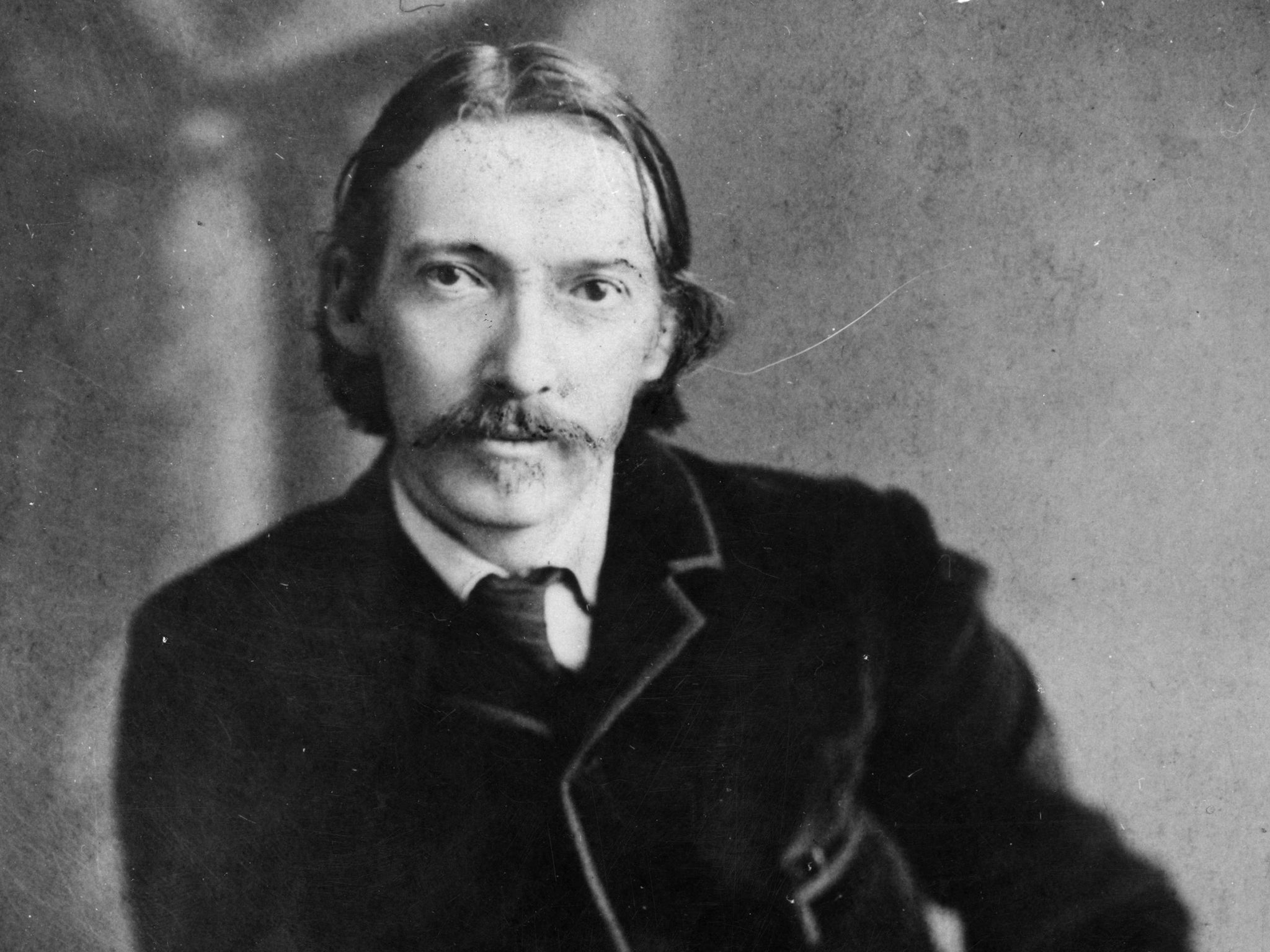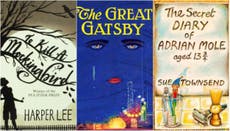Could Robert Louis Stevenson’s ‘Kidnapped’ be the novel for our times?
With images of political turmoil and dissent reminiscent of our own era, the author’s fourth book is a strikingly timely read, says Michael Dirda

Your support helps us to tell the story
From reproductive rights to climate change to Big Tech, The Independent is on the ground when the story is developing. Whether it's investigating the financials of Elon Musk's pro-Trump PAC or producing our latest documentary, 'The A Word', which shines a light on the American women fighting for reproductive rights, we know how important it is to parse out the facts from the messaging.
At such a critical moment in US history, we need reporters on the ground. Your donation allows us to keep sending journalists to speak to both sides of the story.
The Independent is trusted by Americans across the entire political spectrum. And unlike many other quality news outlets, we choose not to lock Americans out of our reporting and analysis with paywalls. We believe quality journalism should be available to everyone, paid for by those who can afford it.
Your support makes all the difference.Robert Louis Stevenson’s Kidnapped appeared in 1886, the same year as The Strange Case of Dr Jekyll and Mr Hyde and just three years after Treasure Island. According to The Oxford Companion to Children's Literature, it is “one of the most brilliant adventure stories of all times” – and that's no exaggeration. Yet Kidnapped is also more than just exciting and more than just a kids’ book; it's a thoughtful novel about politics and dissent, rich in moral complexity, and, for a reader in 2021, weirdly contemporary at times. It’s also beautifully written, the occasional Scots word or phrase contributing to its peaty flavour.
At its centre is David Balfour, who at 17, following the death of his schoolteacher father in 1751, hikes to the small town of Cramond, near Edinburgh, with a letter for an uncle he never knew he had. Old Ebenezer Balfour turns out to be miserly and widely hated, residing in a dilapidated, only half-built house. After David learns a long-hidden secret, Ebenezer – quite the Dickensian rascal – conspires to have the lad tricked onto a brig sailing for the Carolinas, where he will be sold into indentured slavery.
Though frequently brutal, Captain Hoseason and the officers of the Covenant aren’t stock-company villains. When not drunk or tempted by the prospect of easy wealth, they can even be almost admirable. Human beings, as Stevenson's work repeatedly shows us, are consistently inconsistent. Think of the multifaceted Long John Silver and Dr Jekyll. Or consider Alan Breck Stewart.
One foggy night the Covenant, still in Scotland's coastal waters, inadvertently runs down a rowboat. Everyone on board drowns, except for one man who rescues himself by leaping up and grabbing the ship’s bowsprit:
“He was smallish in stature,” recalls David, “but well set up and as nimble as a goat; his face was of a good open expression, but sunburnt very dark, and heavily freckled and pitted with the small-pox; his eyes were unusually light and had a kind of dancing madness in them, that was both engaging and alarming; and when he took off his greatcoat, he laid a pair of fine, silver-mounted pistols on the table, and I saw that he was belted with a great sword. His manners, besides, were elegant ... Altogether I thought of him, at the first sight, that here was a man I would rather call my friend than my enemy.”
Alan, it turns out, is a Jacobite, one of the highlanders who, defeated at the Battle of Culloden five years previous, nonetheless continue to support the “restoration” of the Stuarts to the throne of England. Despite a price on his head, he secretly travels back and forth between Scotland and France, collecting money for the exiles and relying on members of his clan to help him dodge the government’s forces. In particular, Alan hates with a passion all the Campbells, whose chief – known as the Red Fox – functions as the crown's agent of oppression and exploitation.
David – apolitical, law-abiding, and a lowlander to boot – quickly succumbs to Alan's glamour, swagger and almost whimsical egotism. This highlander with a taste for French finery is, in fact, one of those charismatic rogues we simply can't resist, like that foppish Caribbean pirate, Captain Jack Sparrow, or the cocky galactic mercenary Han Solo.
Fanatical Trumpians today swear faithful allegiance to The Donald. Some of the more deluded even picture themselves as swashbucklers, fighting for their clan chieftain’s ‘restoration’
From the moment this coolly self-possessed outlaw swings aboard the Covenant, Kidnapped begins to speed up, to move faster and faster, like the quicksilver thrusts of Alan's sword, and only slows occasionally so that the reader and our heroes can catch their breath.
Certainly no one ever forgets Alan and David’s buddy-movie defence of the ship’s roundhouse against the entire crew of the Covenant, or the quiet moment when Alan cuts a silver button from his coat and bestows it on David with the words, “show that button ... and the friends of Alan Breck will come around you”, or that shivery episode when the shipwrecked David washes ashore on a deserted, rain-swept island. And that's just to start. How many other writers could convincingly depict a blind highwayman or cap that eerie encounter with a duel on bagpipes between Alan and a son of the famous Rob Roy?
Still, above them all and beyond praise, are the chapters titled “The Flight in the Heather”, during which the two comrades, accused of murdering the Red Fox, try to escape capture by a life-or-death scramble across the rough terrain of the Scottish highlands. These pages provide the template for many later classics of topographical pursuit, including John Meade Falkner's Moonfleet, John Buchan’s The Thirty-Nine Steps and Geoffrey Household’s Rogue Male. As Stevenson once said: “No man is any use until he has dared everything.”
Is that true? Given that Kidnapped returns again and again to the theme of loyalty, in all its forms, and does so against a backdrop of violence and civic turmoil, it now seems unexpectedly, even upsettingly relevant. Divided 17th-century Scotland can’t help bringing to mind our divided 21st-century America. Just as the “wild highlanders” supported Bonnie Prince Charlie, so fanatical Trumpians today swear faithful allegiance to The Donald. Some of the more deluded, I suspect, even picture themselves as daring swashbucklers, fighting for their clan chieftain's “restoration”. Viewed through this lens of current politics, Kidnapped grows into what Henry James called it – “a novel of extreme psychological truth”.
James also thought Stevenson a genius, Oscar Wilde found him “a delightful master of delicate and fanciful prose” and, in a case of like calling to like, GK Chesterton relished his many “snapping phrases that seem to pick things off like pistol shots”. Both Borges and Nabokov, no less, cherished his work. Certainly Stevenson's novels and stories exhibit extraordinary verve, whether depicting many-sided characters, richly atmospheric settings or political history. Above all, though, as biographer James Pope-Hennessy observed, the author of Kidnapped remains “the great exhilarator”. It's hard to disagree with Henry James when he called his friend's death in 1894, from a cerebral haemorrhage at age 44, nothing less than “an absolute devastation”.
© The Washington Post




Join our commenting forum
Join thought-provoking conversations, follow other Independent readers and see their replies
0Comments